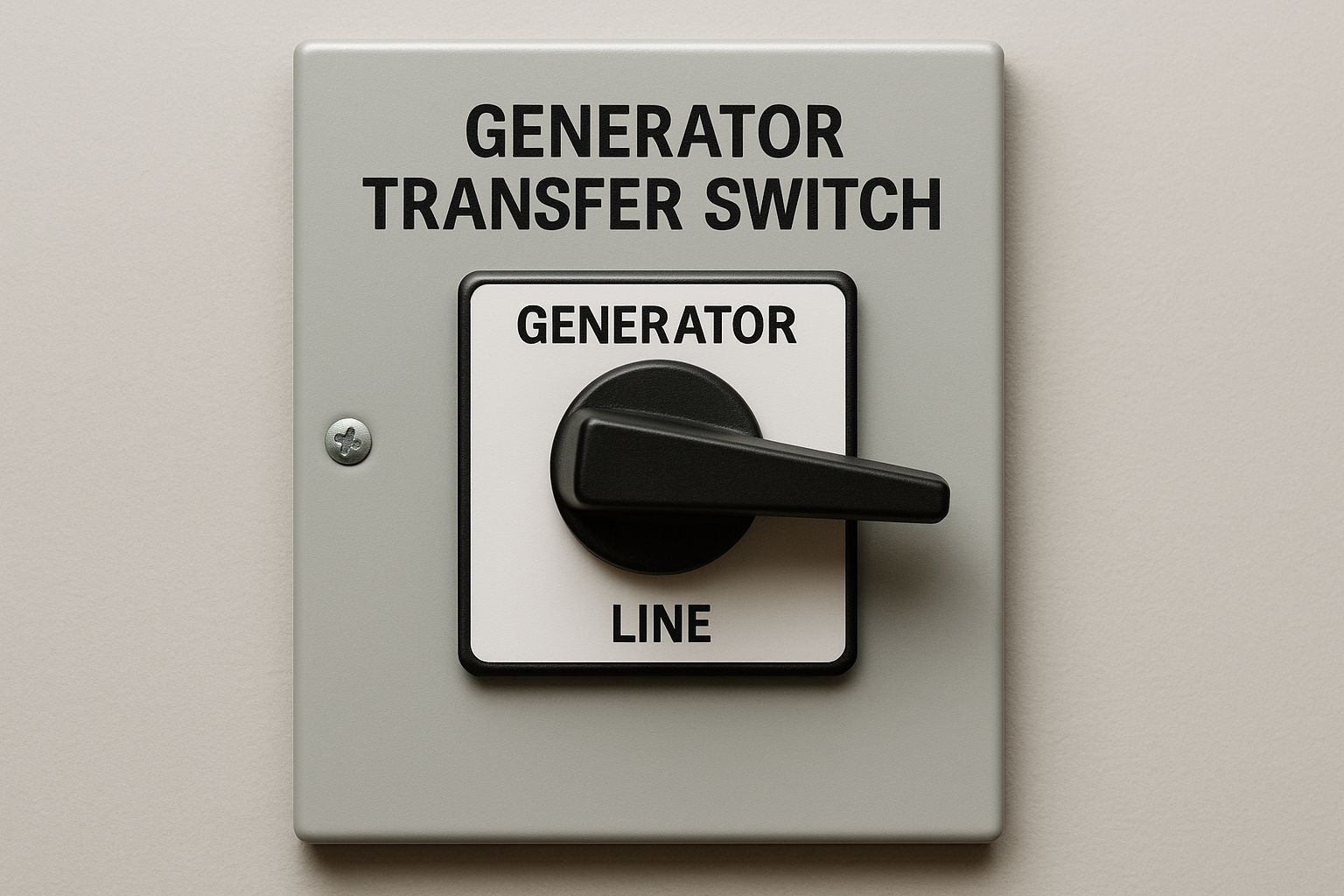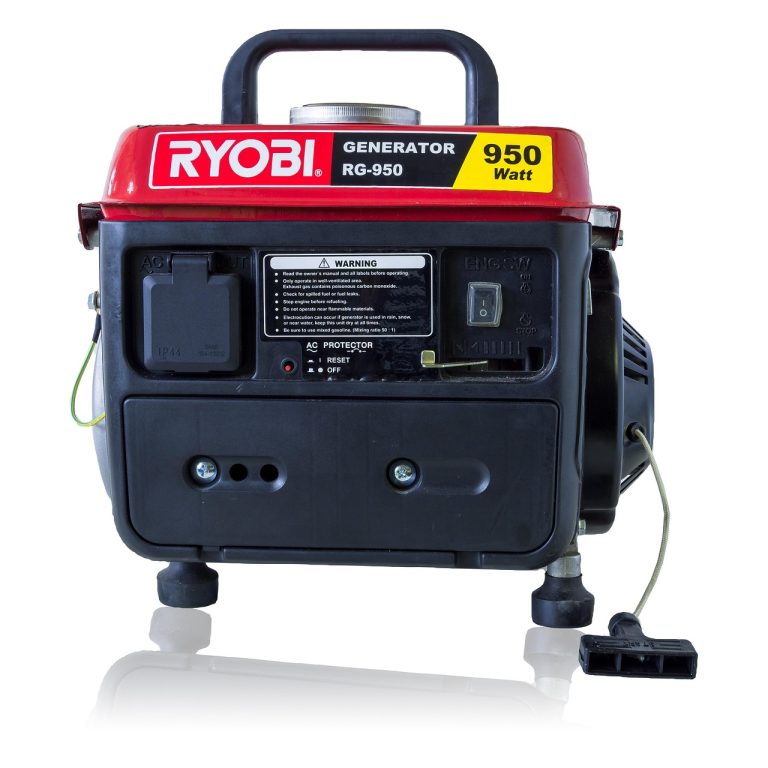What Size Generator Transfer Switch Do I Need?
As a homeowner, I understand the importance of a reliable power source during an outage. That’s why I invested in a generator and transfer switch.
But I didn’t realize the crucial role of the switch’s size. In this article, I’ll delve into selecting the correct size for a generator transfer switch.
Choosing one too low can damage equipment, while one too high leads to unnecessary expenses. Let’s discover what size generator transfer switch you truly need.
Key Takeaways
- The size of the transfer switch should be determined based on the electrical load of the equipment.
- Choosing a switch with a lower wattage rating than the generator can cause overload and damage.
- Choosing a switch with a higher wattage rating than the generator can result in unnecessary expenses.
- Consulting with a licensed electrician is crucial to ensure the correct transfer switch size and avoid potential damage.
Factors to Consider When Determining Generator Transfer Switch Size
One factor to consider when determining the size of a generator transfer switch is the total electrical load. It’s important to accurately calculate the power consumption of all the equipment that needs to be powered during an outage.
To determine the correct size for a generator transfer switch, follow these steps:
1) Determine the total electrical load by adding up the wattage of all the appliances and equipment.
2) Convert the power consumption measured in amps to watts by multiplying amps by voltage.
3) Consult with a licensed electrician to ensure the correct transfer switch size.
Common mistakes when selecting the transfer switch size include choosing one with a lower wattage rating than the generator, which can cause overload and damage, or selecting one with a higher wattage rating than the generator, resulting in unnecessary expenses.
It’s important to consider the specific needs of the electrical system and seek professional guidance to avoid these mistakes.
Importance of Matching Generator Transfer Switch Size to Electrical Load
Choosing the correct size for a generator transfer switch is crucial to ensure that it can handle the electrical load of the equipment. There are several factors to consider when determining the appropriate size.
If the switch is too small, it may not be able to handle the power demand, potentially causing overload and damage to both the switch and the generator. On the other hand, if the switch is too large, it can result in unnecessary expenses.
It’s important to consult with a licensed electrician to accurately determine the size needed for the transfer switch. They can consider the specific needs of the electrical system and guide you in selecting the appropriate size.
Steps to Calculate the Total Equipment Load for Generator Transfer Switch
When determining the total equipment load for a generator transfer switch, it’s important to follow these steps.
First, calculate the load requirements by determining the electrical equipment needs. Consider all the lights, appliances, and equipment that you want to power during an outage.
Next, convert the power consumption measured in amps to watts by multiplying amps by voltage. This will give you the total wattage needed to power your equipment.
Consulting with a licensed electrician is crucial in this process to ensure the correct transfer switch size. They have the expertise to consider the specific needs of your electrical system and can guide you in selecting the appropriate transfer switch size.
Benefits of Consulting With a Licensed Electrician for Transfer Switch Sizing
Consulting with a licensed electrician provides numerous benefits when determining the sizing requirements for a generator transfer switch.
The benefits of professional guidance include:
- Expertise: A licensed electrician has the knowledge and expertise to accurately assess the electrical load and recommend the appropriate transfer switch size.
- Compatibility: An electrician can ensure that the transfer switch is compatible with the generator, avoiding any compatibility issues.
- Avoiding Potential Damage: By consulting with a licensed electrician, you can avoid the risk of choosing the wrong size transfer switch, which can result in overload and potential damage to both the switch and the generator.
- Peace of Mind: With the guidance of a professional, you can have peace of mind knowing that the transfer switch is correctly sized for your specific needs, ensuring reliable power during an outage.
Consequences of Choosing a Transfer Switch With Insufficient Wattage Rating
But, if I don’t choose a transfer switch with a sufficient wattage rating, I could face serious consequences.
One of the main consequences of inadequate wattage is the potential for overload and damage to both the transfer switch and the generator. When the electrical load exceeds the switch’s capacity, it can lead to overheating and even failure of the switch.
Additionally, using a transfer switch with a lower wattage rating than the generator can result in unreliable power during an outage, as the switch may not be able to handle the power demands.
On the other hand, choosing a switch with a higher wattage rating than the generator can lead to unnecessary expenses, as you’d be paying for more capacity than you actually need.
Therefore, it’s crucial to consider the cost implications of incorrect sizing and ensure that the transfer switch has a wattage rating that matches or exceeds the total equipment load.
Potential Issues of Choosing a Transfer Switch With Excessive Wattage Rating
During my research, I discovered potential issues that can arise when choosing a transfer switch with an excessive wattage rating. These issues include:
- Increased cost: Choosing a transfer switch with a higher wattage rating than your generator can result in unnecessary expenses. You may end up paying more for a switch that can handle more power than your generator can produce.
- Inefficient power usage: An oversized transfer switch may not efficiently utilize the power from your generator. This can lead to wasted energy and higher fuel consumption.
- Limited generator lifespan: Running a generator with a transfer switch that has an excessive wattage rating can put unnecessary strain on the generator’s components. This can shorten its lifespan and lead to costly repairs or replacements.
- Safety risks: Using a transfer switch that isn’t properly matched to your generator can pose safety risks, including the potential for electrical fires or damage to your electrical system.
To avoid these potential issues, it’s crucial to consult with a licensed electrician to determine the correct transfer switch size for your specific generator and electrical load.
Understanding the Function and Role of a Generator Transfer Switch
One important aspect to consider when it comes to generator transfer switches is their function in automatically switching the electrical system to the generator during a power outage. This is crucial because it ensures a reliable source of power when the main grid fails.
The transfer switch acts as a bridge between the generator and the electrical system, detecting the loss of power and seamlessly transferring the load to the generator. It plays a vital role in preventing electrical backfeeding, which can be dangerous for both the utility workers and the generator.
Therefore, proper transfer switch installation is essential for generator safety precautions. It’s important to consult with a licensed electrician who can ensure the correct installation and sizing of the transfer switch, taking into account the specific needs of the electrical system.
Ensuring Reliable Power During Outages: Why Transfer Switch Size Matters
To ensure a reliable source of power during outages, it’s crucial to consider the size of the transfer switch and its compatibility with the generator. Factors to consider when determining the transfer switch size include calculating the total load of the equipment that needs to be powered during an outage.
It’s important to accurately determine the power consumption of all lights, appliances, and equipment by converting amps to watts. Consulting with a licensed electrician is essential in choosing the correct transfer switch size as they have the expertise to assess the specific needs of the electrical system.
Conclusion
In conclusion, selecting the correct size for a generator transfer switch is crucial for ensuring a smooth and efficient power transfer during outages.
Choosing a switch with too low of a wattage rating can lead to overload and damage, while opting for one with too high of a rating can result in unnecessary expenses.
By considering the total electrical load of your equipment and consulting with a licensed electrician, you can make an informed decision and ensure a reliable and efficient power source when you need it most.


